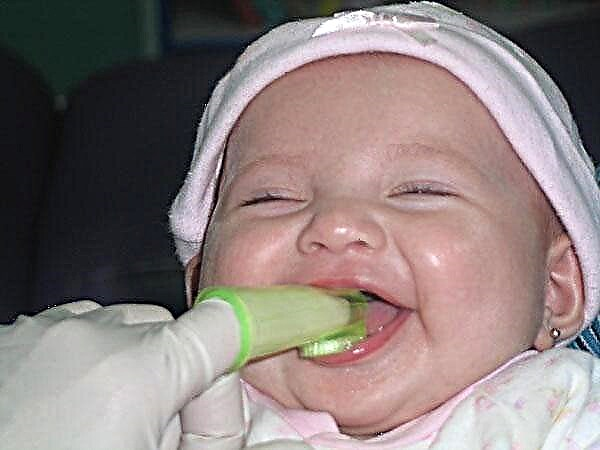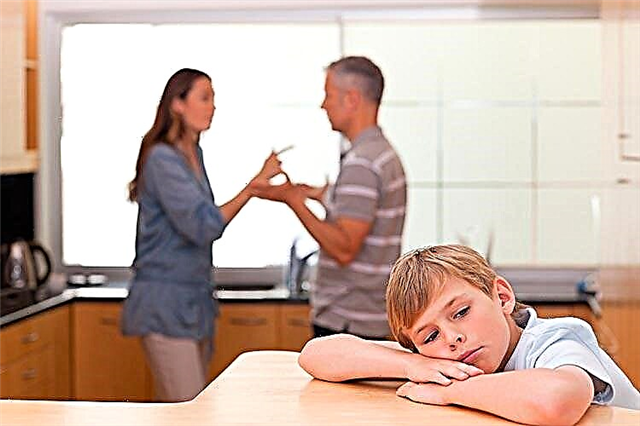
Many parents have experienced nosebleeds in their children, but not everyone knows why nosebleeds often flow in childhood, and also how to act correctly with such a problem. Let's find out the opinion of Dr. Komarovsky and his advice for parents with nosebleeds in children.

Causes
A well-known pediatrician calls the anatomical features of the structure of the nasal mucosa the main cause of frequent bleeding in children. It is they that cause the appearance of frequent bleeding in some children and the absence of such a problem in other babies. Among the most frequent provoking factors, Komarovsky calls the dry air in the room in which the child stays.
According to a popular doctor, the dry air causes the mucus in the child's nose to dry out and form crusts, and when the child picks them off, bleeding opens.
In this case, Komarovsky emphasizes, we are talking about bleeding that is not caused by trauma (fall, blow), when the cause of the bleeding from the baby's nose is obvious. Excessively dry air becomes the cause of those bleeding that appears suddenly, for no apparent reason.
Increased production of mucus in a child's nose is caused by a viral infection, exposure to an allergen or bacteria, and drying out of mucus can be caused not only by dry air in the room, but also by taking certain medications (vasoconstrictor, anti-inflammatory, antihistamines and others), a prolonged increase in body temperature, inhalation of contaminated air.
The bleeding itself can begin not only when picking in the nose, but also when sneezing, while walking, inhaling or while sleeping - in all cases when the pressure on the nasal septum increases.

However, the cause of a child's nosebleed can be much more serious, however, as Komarovsky notes, problems with blood coagulation, liver, blood pressure and other serious illnesses will never manifest itself only with nosebleeds. If your baby has any of these conditions, he or she will have other symptoms, such as a rash on the skin, frequent bruising, headaches or dizziness.
Urgent care
When a child has nosebleeds, Komarovsky recommends doing this:
- To seat the baby with the body tilted forward. The child's head should be straight or slightly tilted forward.
- The baby's nostrils should be pinched with fingers and held for about 10 minutes. The mother or the child himself can squeeze the nose. The child must breathe through the mouth while waiting.

According to the popular doctor, the rate of cessation of blood flow is primarily influenced by the diameter of the damaged vessel. Also, the duration of bleeding will be determined by the state of the blood coagulation system and taking certain medications. In most cases, ten minutes will be enough for normal nosebleeds to stop.
To speed up the stop of bleeding, a popular doctor recommends cold, but only if the child can pinch his nose on his own (while the mother runs to the kitchen for something cold). Komarovsky advises to apply ice by applying it to the bridge of the nose. You can also give your child ice cream or a cold drink through a straw, as the cold in the mouth also helps to stop the bleeding in the nose faster.
In addition, so that 10 minutes of waiting for the blood to stop flowing does not become too long for the child, parents can do something to entertain him, for example, play a cartoon for the child, read to the child or tell him a story.

The famous pediatrician calls the main mistakes of parents when helping a child with nosebleeds:
- Throwing the child's head back. With this action, the blood will drain into the pharynx, so it will be difficult to understand how severe the vascular damage is, when the bleeding stopped and whether it ended at all. In addition, flowing blood can provoke a gag reflex.
- Introduction of cotton swabs into the nasal passages. After removing the cotton wool from the nose, the crust formed at the site of vascular damage is removed, which causes repeated bleeding.
- Putting the child to bed. Komarovsky focuses the attention of parents on the fact that a child with nosebleeds should not be in a horizontal position.
- Let go of the baby's nostrils earlier, checking to see if blood is still flowing. This will only interfere with the cessation of bleeding.

Also, a child during bleeding should not:
- Blow your nose.
- Cough.
- Talk.
- Swallow blood.
- Move actively.
If 10 minutes have passed, mom has released her nostrils, and the bleeding is still continuing, all actions should be repeated for another 10 minutes. If after twenty minutes from the beginning of the nosebleeds it has not stopped yet, the child should be seen by the doctor.
Komarovsky also advises not to hesitate in seeking medical help if:
- Blood in a child is released from two nostrils at once.
- The child still has bleeding from another part of the body, for example, from the ear.
- Bleeds from the nose are repeated very often.
In the following video, the doctor gives detailed recommendations for helping with nosebleeds in a child, and also talks about the frequent mistakes of parents in such situations.
In all these cases, a well-known pediatrician advises to pinch the nostrils and call an ambulance, or put the child in a car to quickly take him to a medical facility.

Prevention
To prevent the child from having frequent nasal bleeding of a non-traumatic nature, Komarovsky recommends:
- Moisten the air and remove dust accumulators from the room so that the mucus in the nose does not dry out.
- Give your child plenty to drink.
- If the baby has already had nosebleeds, do not use drugs that can dry out the mucous membrane in the treatment.
- Don't let your child pick his nose.
- Moisturize the mucous membrane with saline or oil solutions of vitamins E and A.
- Have a regular blood test.
- Don't let your child strain for a week after a nosebleed.




